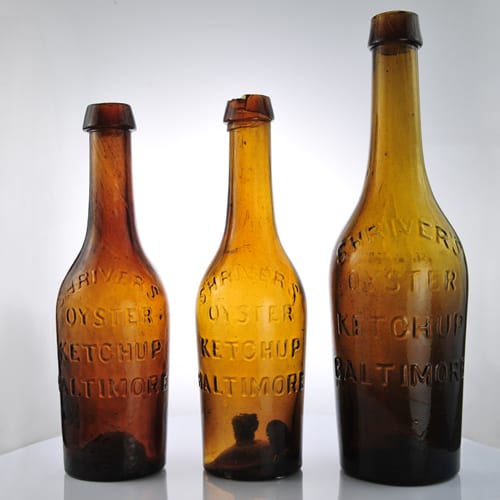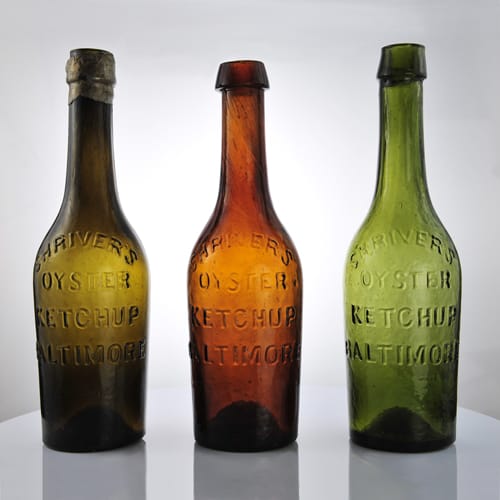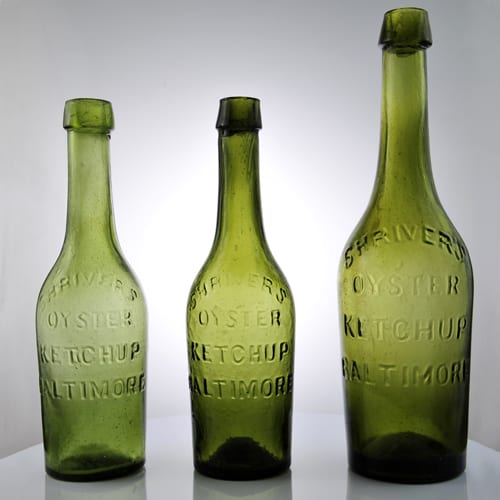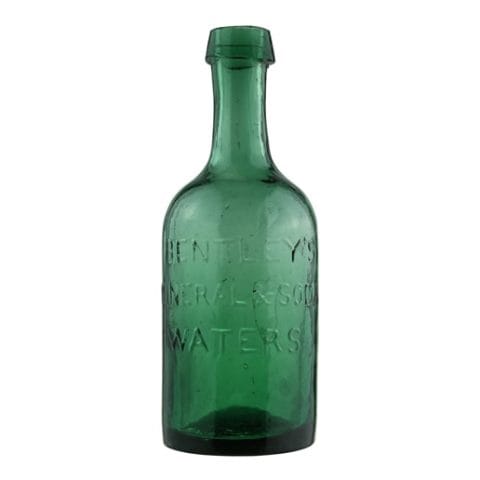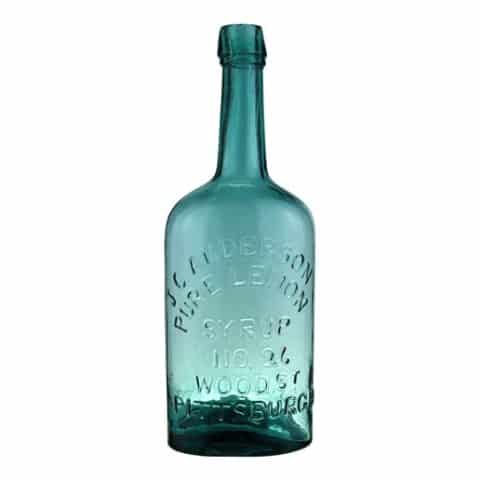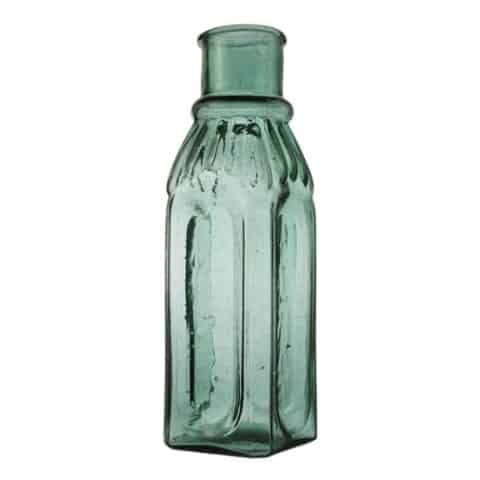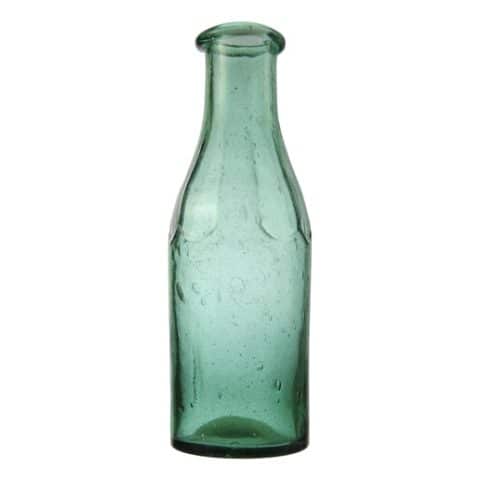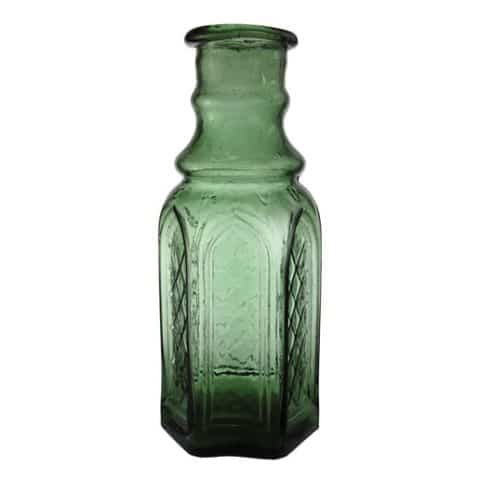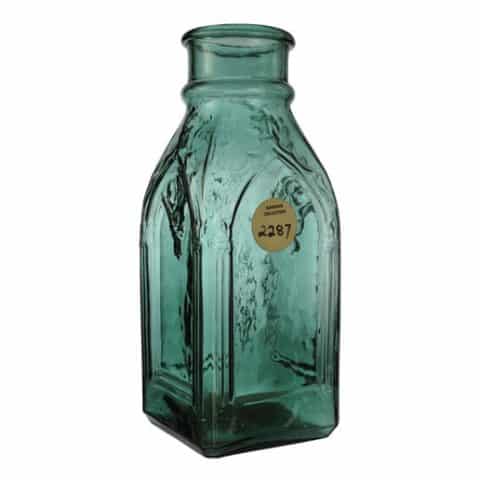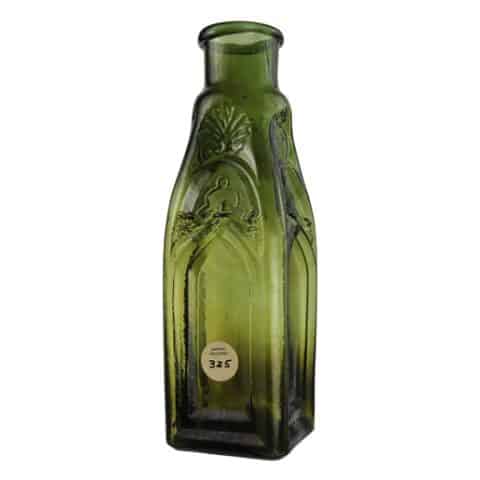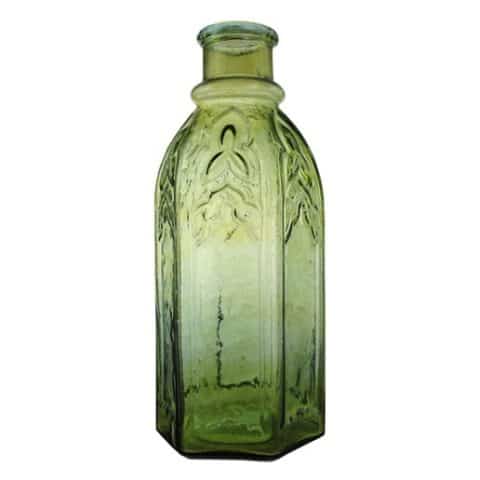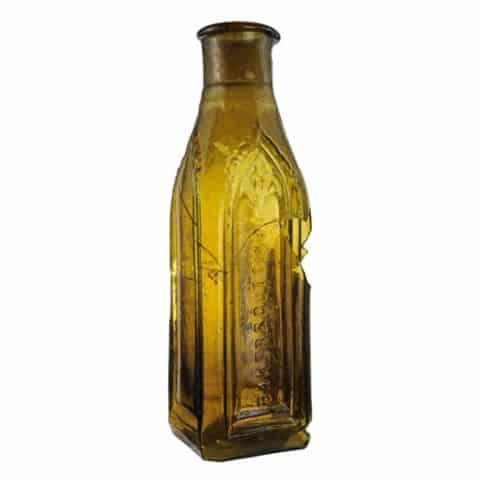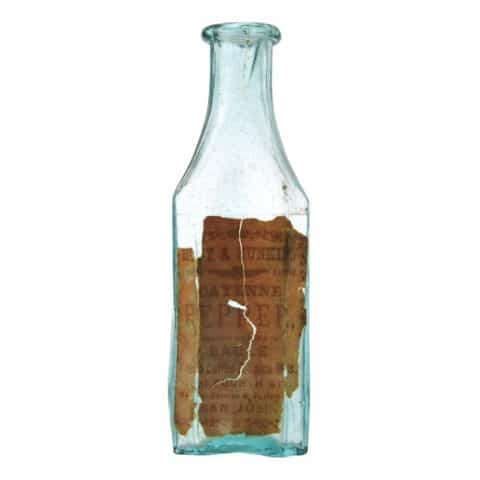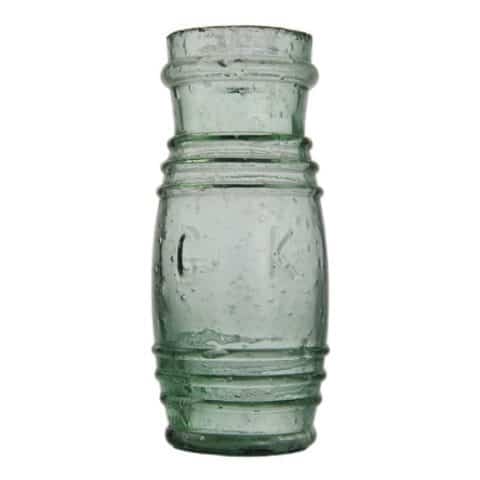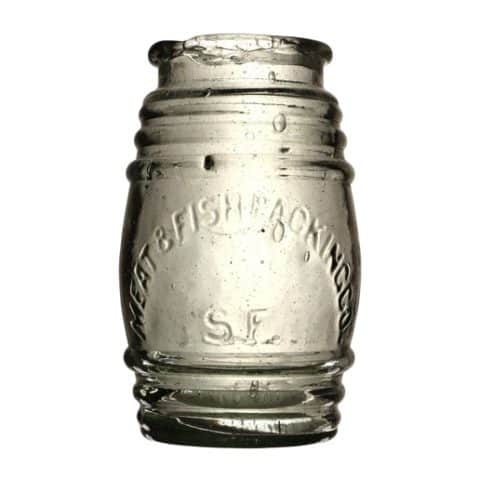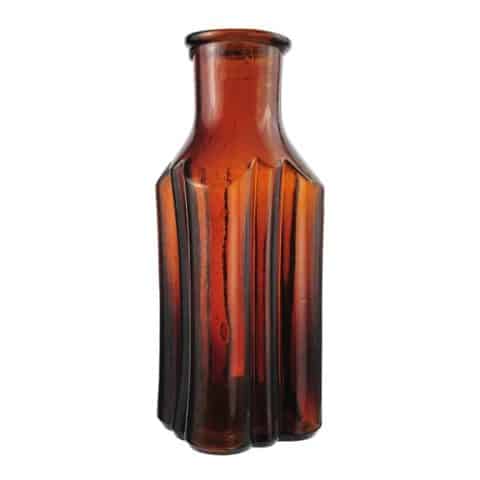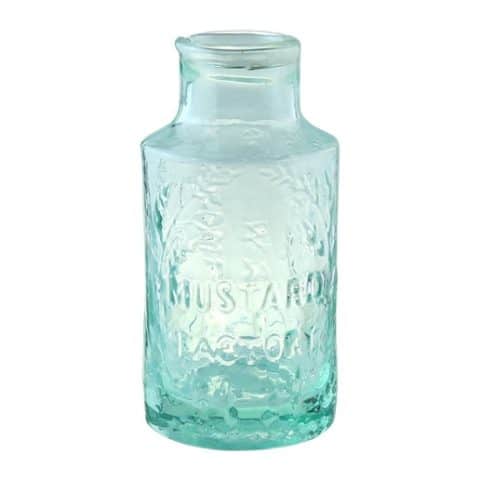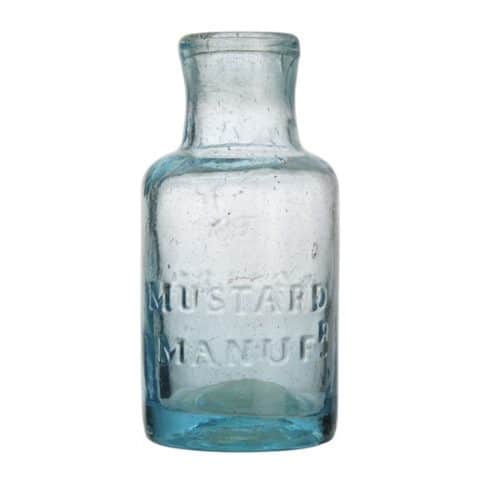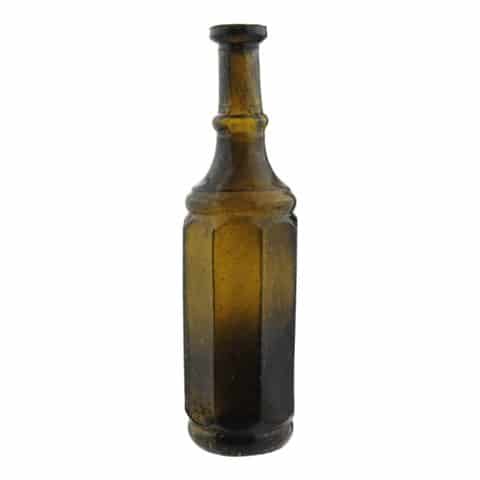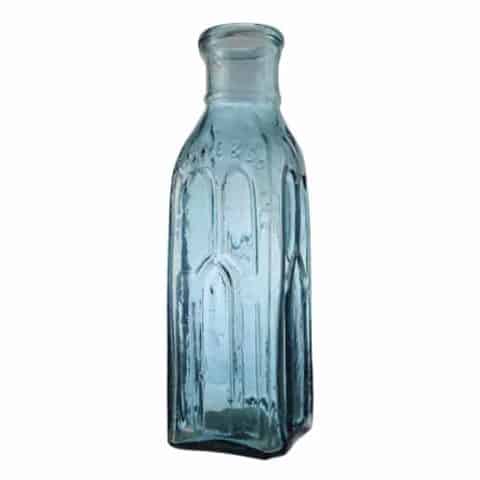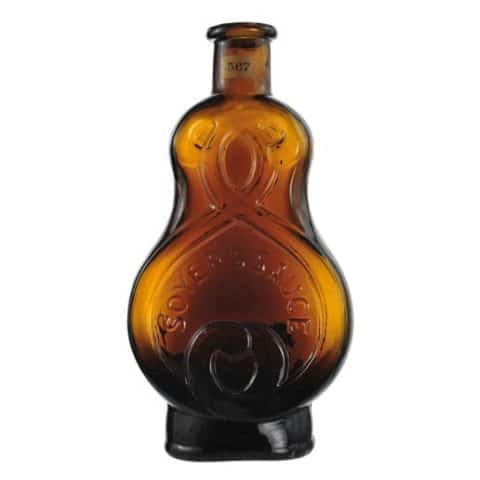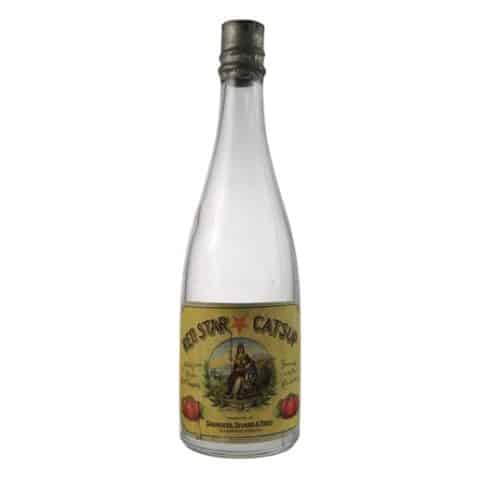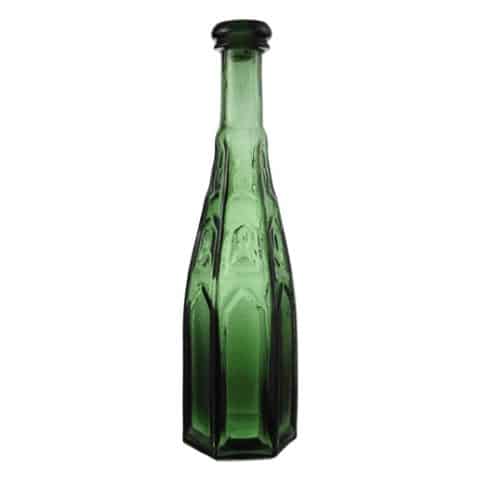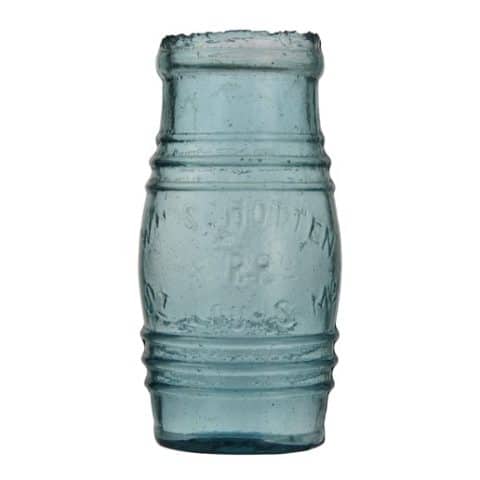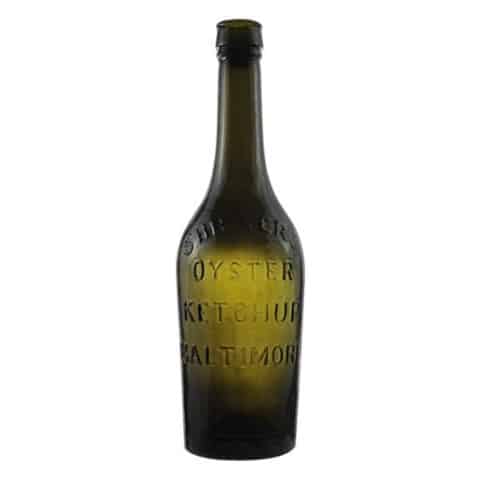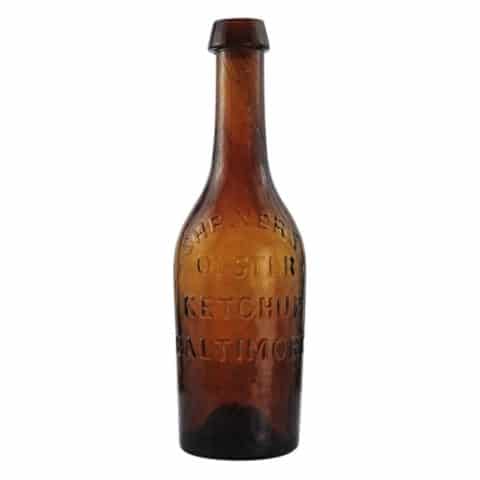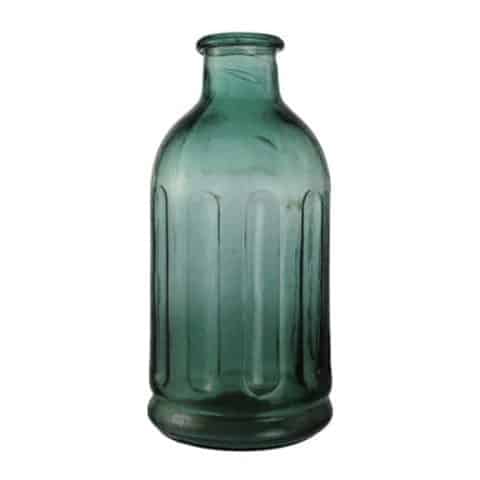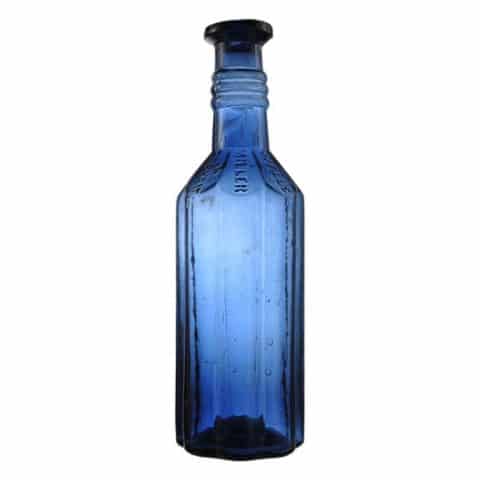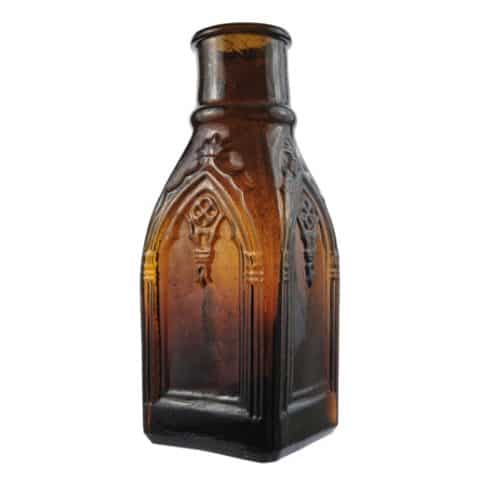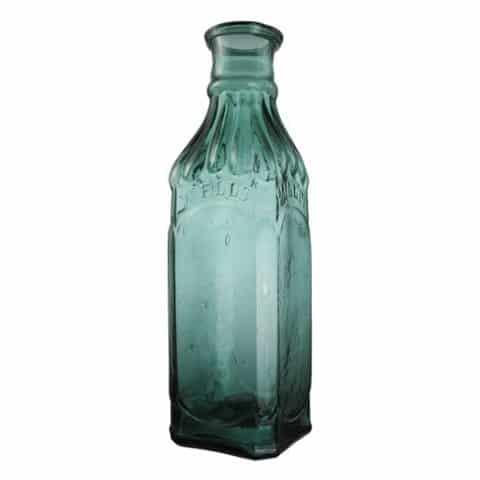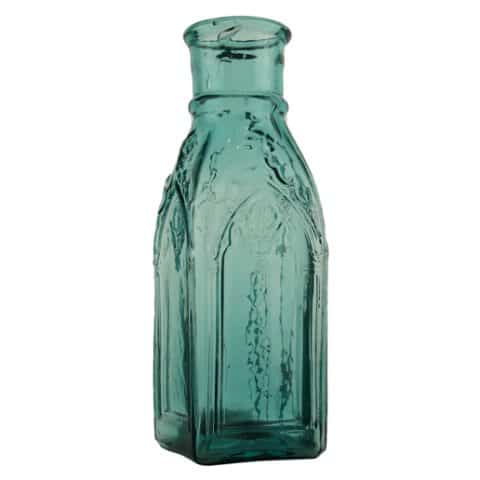Shriver’s Oyster Ketchup Baltimore
Shriver’s Oyster Ketchup
Baltimore
James Shriver & Co., Baltimore, Maryland
Amber Cylinder
Provenance: Lou Pellegrini Collection
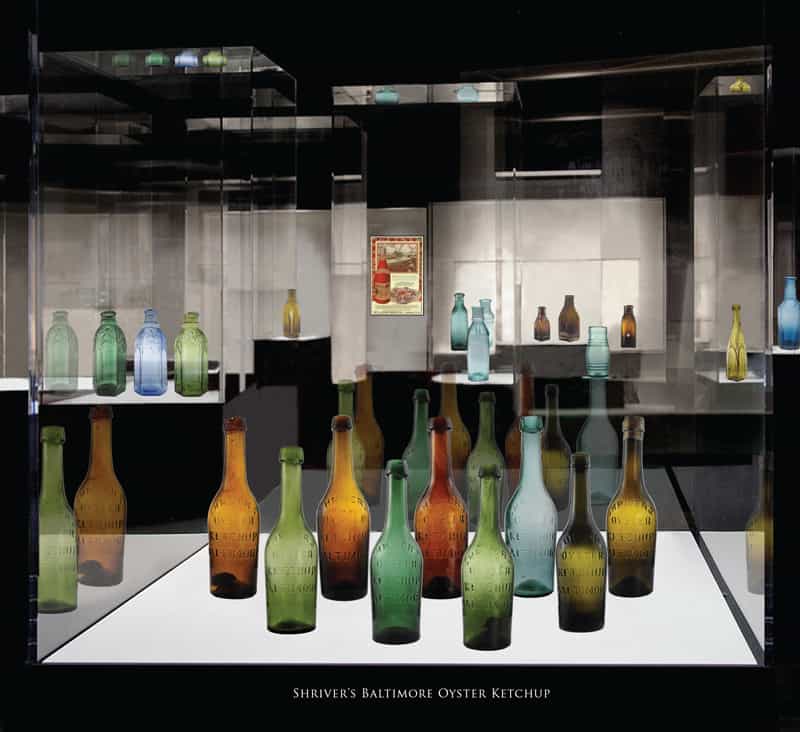
Oyster bars were popular establishments starting in the early to mid-1800s and could be found in eastern cities such as Boston, New York, Philadelphia, and Baltimore that were close to the Atlantic oyster beds. The Dorlon & Shaffer Oyster House at Fulton Market in New York City was famous nationally and even internationally to travelers to the big city. The Union Oyster House in Boston is the oldest continuously open restaurant in the United States as it opened in 1826. Baltimore was the epicenter of seafood at that time with its proximity to the Chesapeake Bay.
See our museum example of a Dorlon & Shaffer Pickled Oysters Fulton Market New York jar.
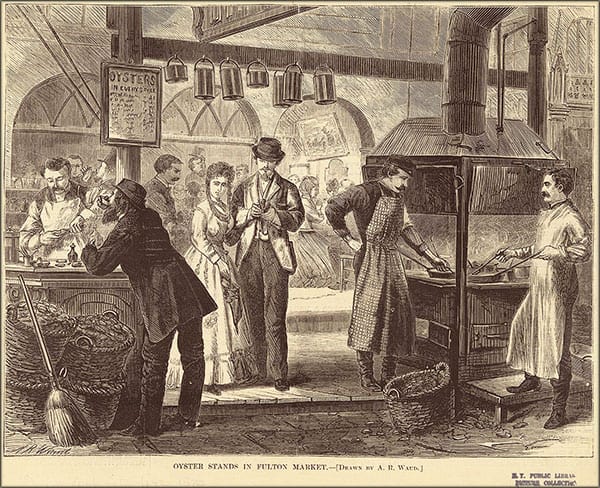
James Shriver whose name is represented on our Shriver’s Oyster Ketchup bottle was born on November 15, 1827. He was the eldest son of William Shriver and Mary Margaret Josephine Owens of Union Mills (Myers District), Carroll County, Maryland. Union Mills is northwest of both Baltimore and Westminster, Maryland.
The Shriver family was quite large as James had six brothers, Thomas Herbert, Benjamin F., William Tell, Christopher Columbus, Mark O., and Albert K. Shriver. He also had five sisters, Elizabeth, Sarah, Mary, Emma, and Margarite. The eldest, Elizabeth, was married to Thomas J. Myer (Thos. J. Myer & Co.) who was one of the pioneers in the oyster and fruit packing business in Baltimore. The Shrivers and Myers were connected in many ways.
On January 21, 1852, James Shriver married Elizabeth Jane Myer who was a sister of Thomas J. Myer. In the 1850 United States Federal Census, James was counted as a member of the Myer household. Two of the Shriver brothers were also partners with Thomas J. Myer, that being Mark O., and Albert K. Shriver.
See the museum example of the Thomas J. Myer pint jar from Baltimore, Maryland.
James Shriver started out in the pickle and preserve business in 1856 located at 307 W. Pratt in Baltimore. In 1858, he formed a partnership with Joseph Fink, Jr. which ended with a Notice of Dissolution of Partnership on August 31st, 1860, “The firm of Shriver & Fink is this day dissolved by mutual consent. James Shriver & Co. having purchased the entire interest of Joseph Fink, Jr. are alone authorized to use the name of the late firm in settlement. An adjacent Notice of Co-partnership read “The undersigned have this day formed a Co-partnership under the name and style of James Shriver & Co., for the purpose of continuing the Oyster, Pickling and Preserving Business lately carried on by Shriver & Fink, 307 West Pratt Street, Baltimore.”
The undersigned have this day formed a Co-partnership under the name and style of James Shriver & Co., for the purpose of continuing the Oyster, Pickling and Preserving Business lately carried on by Shriver & Fink, 307 West Pratt Street, Baltimore
The Daily Exchange, Wednesday, September 5,1860
At this same time in 1860, the Shriver’s Oyster Ketchup bottles must have been in production at Baltimore Glass Works because we start seeing advertisements nationally in 1861. One said, “The product was made of the finest and highest-flavored Baltimore Oysters, containing all of their flavor, and is pronounced the best Ketchup, or Sauce, now in use. It is intended for use on all meats, hot or cold, and is particularly good on poultry. For seasoning soups and gravies it has no equal and is a delightful addition to chicken salad, or wherever a ketchup or sauce is desirable. Originated and prepared only by Jas. Shriver & Co., Baltimore, Md.”
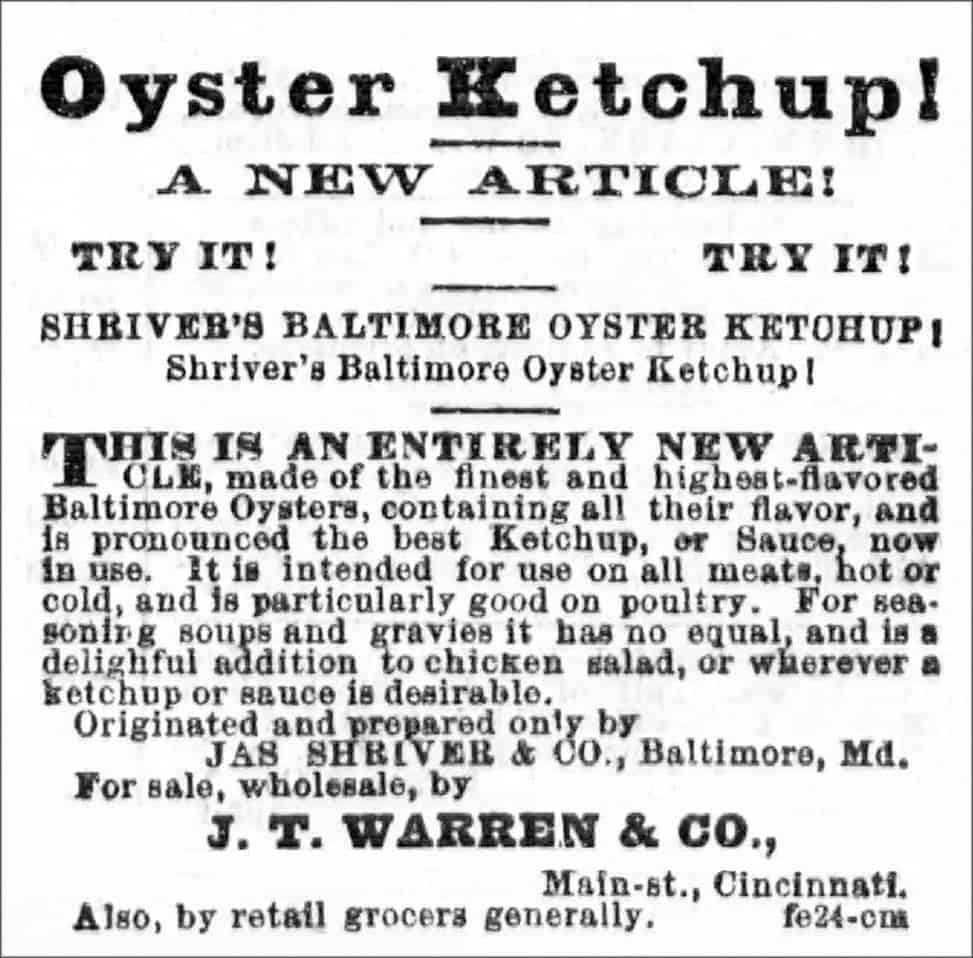
James Shriver would remain in business for another ten years or so and he would move into the insurance business next where he was respected, well-known, and very successful. We also see that James Shriver of Baltimore was granted a patent in 1866 for a refrigerator, and assigned it to his son, Charles H. Shriver, of Dedham, Massachusetts. James Shriver would die on January 31, 1887.
Brother Benjamin Frank Shriver would start B. F. Shriver Company in 1869, the first canning plant in the Union Mills Carroll County area of Maryland. Thomas Herbert Shriver would join as a partner in 1874. The business expanded so rapidly that by 1881 the plant was moved from Union Mills to Westminster. Within the next twenty years, the B. F. Shriver Co. had plants in Littlestown, New Windsor, Sykesville, and Williamsport, in addition to the parent plant in Westminster. The company was incorporated in 1905 at which time Thomas Herbert became president; Frank Shriver, vice president; and Herbert’s eldest son Joseph, second vice president; and Herbert’s youngest son William, treasurer.
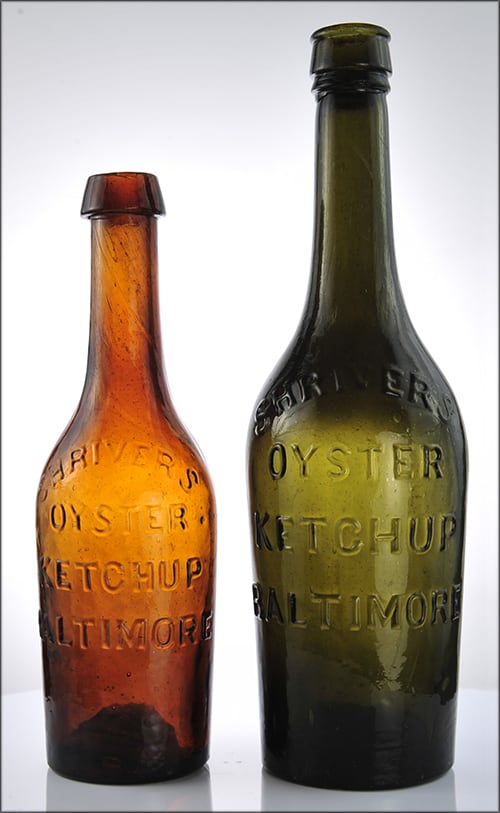
There are two sizes of bottles embossed ‘SHRIVER’S OYSTER KETCHUP BALTIMORE.’ The smaller is roughy 7 ½” tall x 2″ diameter while the second is 9″ tall. Both are represented in our museum and are considered extremely rare. There are some examples that are smooth base that were most likely blown at the end term of James Shriver & Co. though most examples are open or iron pontiled.
See our museum example of an olive green 9″ tall Shriver’s Baltimore Oyster Ketchup bottle with a Lea & Perrins style mouth.

The embossed copy ‘SHRIVER’S’ is arched on the face on the bottle over three lines of copy, ‘OYSTER’ (2nd line), ‘KETCHUP’ (3rd line), and ‘BALTIMORE’ (4th line). The mouths are typically long or short tapered collars. The bottles exude character with crudity and whittle, bubbles drips, high kick-ups, and stretch marks in the glass. You can find them in beautiful shades of amber, green, and aqua.

Support: Reference to Ketchup Pickles Sauces – 19th Century Food in Glass by Betty Zumwalt
Support: Reference to The Letters of Cardinal James Gibbons to the Shriver Family, II by John Quentin Feller
Primary Image: Shriver’s Baltimore Oyster Ketchup bottles imaged by the FOHBC Virtual Museum west coast studio by Gina Pellegrini.
Join the FOHBC: The Virtual Museum is a project of the Federation of Historical Bottle Collectors (FOHBC). To become a member.

